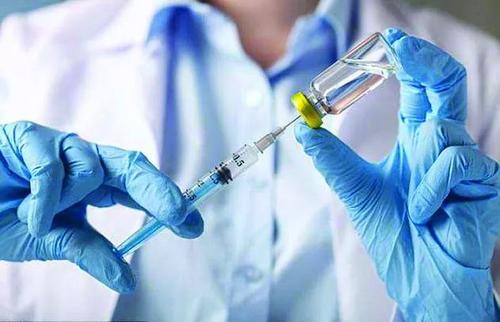The protection rate of COVID-19 vaccine varies | is it reliable?
- Normal Liver Cells Found to Promote Cancer Metastasis to the Liver
- Nearly 80% Complete Remission: Breakthrough in ADC Anti-Tumor Treatment
- Vaccination Against Common Diseases May Prevent Dementia!
- New Alzheimer’s Disease (AD) Diagnosis and Staging Criteria
- Breakthrough in Alzheimer’s Disease: New Nasal Spray Halts Cognitive Decline by Targeting Toxic Protein
- Can the Tap Water at the Paris Olympics be Drunk Directly?
The protection rate of COVID-19 vaccine varies | is it reliable?
The protection rate of COVID-19 vaccine varies | is it reliable? Why are the effective rates of the same vaccine different in different countries?

At present, the number of people vaccinated against the COVID-19 is increasing, and some people are still on the sidelines. They are still afraid to get the n COVID-19 vaccine because they all have doubts: Is the protection rate of the COVID-19 vaccine high? Is it reliable?
1. The protection rate of the COVID-19 vaccine varies. Is it reliable?
The effective rate announced by Sinopharm’s COVID-19 vaccine when it was launched was 77.96%, but in the UAE and Brazil, the protection against infection with the COVID-19 virus was 79.34% and 78%, respectively.
Beijing Kexing Zhongwei COVID-19 Inactivated Vaccine Brazil announced the overall effective rate of 50.38% in the early morning of January 13, and on January 7, the effective rate of this vaccine was 77.96%. In Turkey, the effective rate is 91.25%, and in Indonesia, the effective rate has become 65.3%.
Why are the effective rates of the same vaccine different in different countries? Who should I listen to?
In fact, it is because the Phase III clinical trial of the COVID-19 inactivated vaccine is a multi-center clinical trial carried out in multiple countries around the world. Each country has certain differences in case diagnosis standards and procedures, and the final results obtained will also be different. Which one is more scientific requires further observation data.
At present, it is certain that the risk of infection can be reduced after being vaccinated with the COVID-19 vaccine. If calculated according to the effective rate of about 80% of the national medicine n COVID-19 vaccine, the risk of infection for people who have received the vaccine is 80% lower than that of those who have not received the vaccine.
As for safety, the COVID-19 vaccine, like other vaccines, has undergone animal experiments, human pre-testing experiments, and population phase I/II, and phase III clinical trials before being marketed. The safety of the vaccine has been verified many times.
Now the number of vaccinated population has reached 10 million. The current adverse reactions after vaccination are mainly local pain, induration, etc. Less than 1% of mild fever cases, and serious adverse reactions are only about 2/1 million (and may not be related to vaccines) ), so everyone can rest assured to get the COVID-19 vaccine.
2. Who are not recommended to receive the COVID-19 vaccine?
1) Those who are allergic to any ingredient in the vaccine;
2) Those who have experienced severe allergic reactions to vaccines in the past, such as acute allergic reactions, urticaria, skin eczema, dyspnea, angioedema or abdominal pain;
3) People with fever, severe acute disease, and acute attack of chronic disease;
4) Those who have recovered from new coronavirus pneumonia or asymptomatic infection;
5) Inoculated couples who have a family plan within 3 months, as well as pregnant women and lactating women;
6) Those who have history or family history of convulsions, epilepsy, encephalopathy or mental illness;
7) Those who suffer from uncontrolled epilepsy and other progressive neurological diseases, and those who have a history of Guillain-Barré syndrome;
8) Has been diagnosed with congenital or acquired immunodeficiency, HIV infection, lymphoma, leukemia or other autoimmune diseases;
9) Those who are known or suspected of suffering from severe respiratory diseases, severe cardiovascular diseases, liver and kidney diseases, and malignant tumors;
10) Those who use immunomodulators such as anti-tumor drugs;
11) Those who are deemed unsuitable for vaccination by clinicians or vaccination staff. (Specifically subject to vaccine instructions)
(source:internet, reference only)
Disclaimer of medicaltrend.org



